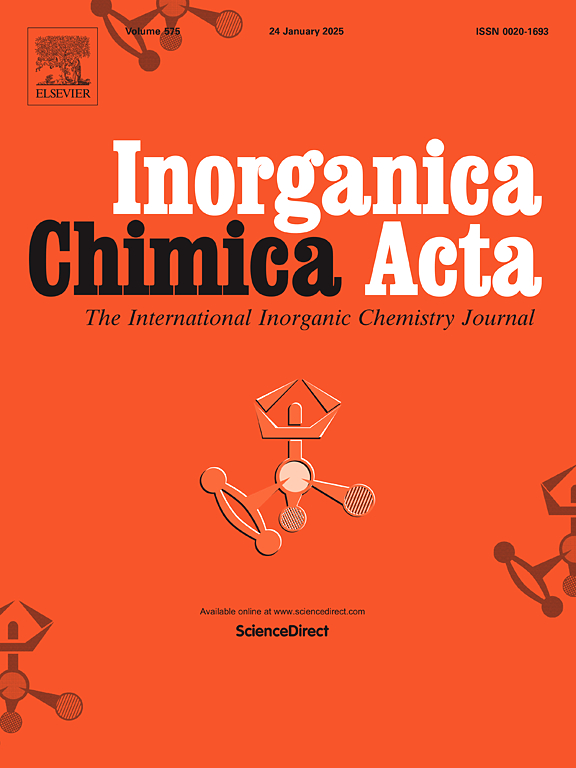Design, synthesis, crystal structure and spectral characterization of copper(II) complexes of the heterocyclic aroylhydrazones: Antimicrobial and antitubercular activity studies
IF 2.7
3区 化学
Q2 CHEMISTRY, INORGANIC & NUCLEAR
引用次数: 0
Abstract
The ligands N′-[(E)-(furan-2-yl)methylidene]-2-hydroxy-3,5-di-tert-butyl-benzohydrazide (HL1), N′-[(E)-(pyrol-2-yl)methylidene]-2-hydroxy-3,5-di-tert-butyl-benzohydrazide (HL2), 2-hydroxy-3,5-di-tert-butyl-N′-[(E)-(thiophen-2-yl)methylidene]benzohydrazide (HL3) and their Cu(II) complexes were synthesized. The ligands and their complexes were characterized by various spectro-analytical techniques including IR, 1H NMR, 13C NMR, EPR, electronic spectroscopy, and elemental analysis. The molecular structures of HL3 and [CuII(L1)2] (1) were unambiguously established using single-crystal X-ray structure determination. All the synthesized compounds were evaluated for the antimicrobial and antitubercular activities. The antimicrobial activity of ligands and complexes 1–3 against S. aureus microorganisms was investigated. The complexes have good antimicrobial activity with low MIC values of 0.4 μg/mL in comparison with control Ciprofloxacin (2 μg/mL). The complexes 1–3 exhibited quite promising low MIC values ranging from 3.12 to 1.6 μg/mL.

求助全文
约1分钟内获得全文
求助全文
来源期刊

Inorganica Chimica Acta
化学-无机化学与核化学
CiteScore
6.00
自引率
3.60%
发文量
440
审稿时长
35 days
期刊介绍:
Inorganica Chimica Acta is an established international forum for all aspects of advanced Inorganic Chemistry. Original papers of high scientific level and interest are published in the form of Articles and Reviews.
Topics covered include:
• chemistry of the main group elements and the d- and f-block metals, including the synthesis, characterization and reactivity of coordination, organometallic, biomimetic, supramolecular coordination compounds, including associated computational studies;
• synthesis, physico-chemical properties, applications of molecule-based nano-scaled clusters and nanomaterials designed using the principles of coordination chemistry, as well as coordination polymers (CPs), metal-organic frameworks (MOFs), metal-organic polyhedra (MPOs);
• reaction mechanisms and physico-chemical investigations computational studies of metalloenzymes and their models;
• applications of inorganic compounds, metallodrugs and molecule-based materials.
Papers composed primarily of structural reports will typically not be considered for publication.
 求助内容:
求助内容: 应助结果提醒方式:
应助结果提醒方式:


